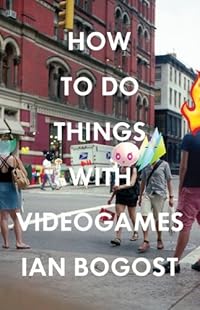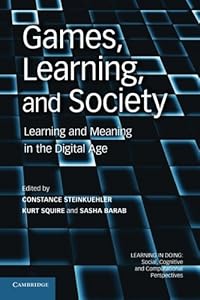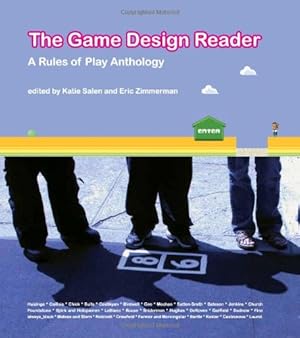Meets Wednesdays, 1:00PM – 3:30PM, Fall 2013
Currently listed as P632: DESIGNING FOR LEARNING IN CONTEXT

In the past decade, the fields of games and learning, serious games, and games for impact have exploded — from the study of commercial games to the design of games for learning to the broader consideration of engagement in gaming culture. In this course, we wrestle with the field of “games and learning” from a decidedly design-oriented perspective. Students will be making, critiquing, and evaluating games for learning throughout the course, while also immersing themselves in a new and exciting educational literature. We will discuss the use of commercial games in instructional contexts, the design of games for specific learning goals, and the contentious notion of “gamification,” or the application of gaming elements to non-game settings. If you are interested in either better understanding games through the lens of the learning sciences or in crafting innovative learning environments with an emphasis on games, this is the class for you.
Though many of us may be drawn to games as educational technologies, we will operate this course under a set of first principles: Games are engaging, motivating, transgressive, and fun, and our considerations of these media in educational research need to get a handle on them as media before understanding them as tools. This will involve firsthand experience playing games as well as making games — starting the very first week of class — while connecting these experiences back to relevant literatures as we go.
Core Course Texts




[Click on images to purchase on Amazon]
Course texts run the gamut from situating students in understanding game studies and game design literatures, then work our way into games and learning — we will also be using a central text to guide our game design exercises in class and outside of class, supplementing as we go with additional PDFs and other online resources. Additionally, games will be assigned to play; typically, these will be free computer games, but approximately $20 worth of commercial games will also be assigned. We’ll be jumping between readings quite often, and students will have a hand in co-designing the course syllabus, as well as which topics we tackle in the latter parts of the course.
What Will You Do?
There are two major fields you’ll be encountering over the course of the semester, and two concrete deliverables you’ll make by the end of the course:
Game Design

Students will design several games over the course of the term — starting with games for entertainment purposes, then moving gradually into games for learning. Paper prototyping will be modeled for students and regularly conducted in the classroom setting over the course of the term, with additional out of class game design exercises assigned for students to conduct at home and then bring into the next class session. Game design is used both as a competency to learn, but also pedagogically, as a means to engage with theoretical and methodological concerns. As we go, we will assess students’ digital game design interests and competencies, and move to appropriate game development platforms that fit students’ expertise (ranging from Twine and GameMaker to ARIS to Unity and Corona Labs). A central feature of the course is the emphasis on game design. For prospective Learning Sciences MS and PhD students, this course fulfills a Designing requirement, but no previous game design experience is expected.
By the end of the course, you will have created (in pairs or in threes) an educational game based on a content area of your group’s choosing. The game will be proposed, paper prototyped, and iterated over the course of the term. You will learn to rigorously playtest, connect game mechanics to concrete learning goals, and collectively justify the game’s significance in written form.
Games and Learning
Additionally, students will develop critical perspectives on games and learning as they progress through the course. Perspectives from the Learning Sciences, Literacy Studies, Educational Technology, Media Studies, and Game Design will all intermingle. You will become immersed in the intersections between these literatures, and make your own connections between them — and then have the opportunity to personally contribute to the field, by learning how to craft a submission for a major games and learning conference. Regardless of one’s home discipline, you’ll have the opportunity to connect these interests back to the pedagogical approaches discussed in the course, and toward an individual contribution to the field.
By the end of the course, all students will have individually created a 7-page conference proposal, appropriate for submission to the Games+Learning+Society 10.0 Conference (submission deadline expected to be February, 2014).
And More…
While the majority of the course deliverables will be structured around these two goals, there will be other opportunities for students to develop games for learning and explore genres of digital and non-digital games (from GPS-based augmented reality games to interactive fiction to tabletop role-playing games). In co-constructing the course syllabus with the instructor, students will have a hand in picking which of the areas of application and which game genres will be focused on, based on which are most relevant to students’ ongoing research.
Contact
If you are interested in the course or have any questions, please don’t hesitate to contact Dr. Duncan!